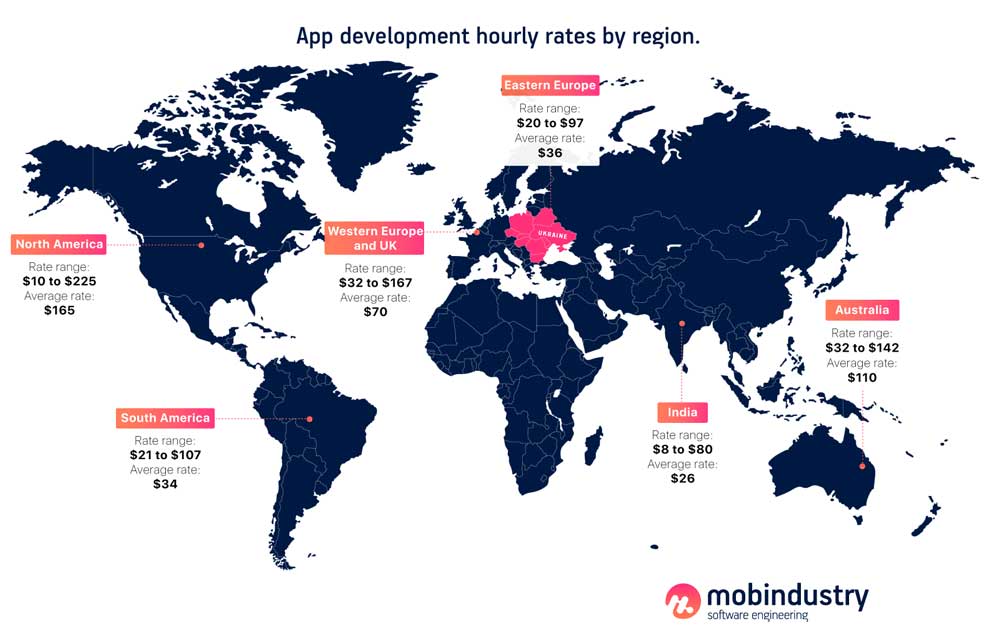How to Create a Truck Sharing Platform and an App Like Fluid
In this article, we talk about a new side of the sharing industry. Find out how to build a successful truck sharing platform.
What is truck sharing?
Startups have not only turned industries upside down; they have revolutionized on-demand technology. Providing everything from hotel rentals and food delivery to laundry services, startups around the world are leveraging the sharing economy to deliver services faster and at lower cost.
Truck sharing allows people to rent trucks via an app — for example, for moving and delivering bulky items — which is ideal when you just need a truck.
Truck sharing is about more than just helping people take home the perfect couch they found on Craigslist. It’s ideal for businesses using traditional delivery services. Instead of paying huge flat rates and waiting five to seven business days to deliver goods to customers, companies are turning to truck sharing services to boost sales and lower shipping costs.
It seems like a new company comes up with some kind of world-changing idea every day. While truck sharing is still a new concept compared to car sharing, you should definitely consider it.
Truck sharing business models
There are a few truck sharing business models you can choose from:
- Station-based. The station-based business model requires station infrastructure in a city where your customers can rent and park trucks. It’s easier to maintain a station-based truck sharing business compared to a free- floating model, since all your trucks will always be parked in designated locations when not in use and you will not need to collect them from all over the city. This business model is the most popular for truck sharing companies.
- Free-floating. According to this model, users can leave and collect trucks anywhere in the city. This is convenient for users, but you need to carefully monitor the cost of parking and move trucks from unpopular places.
- A to B. The A to B business model is quite limiting for customers, as they can only take certain routes. However, this model is more convenient for you, as you can predict the locations of your vehicles.
Basic features of a truck sharing app
User registration
Let your users choose between three methods of registration in your truck sharing app. The first is to register via social media accounts like Facebook or Instagram. The second is standard registration using an email, name, and other contact details. The third is registration via phone number. Registration might be optional for other types of apps, but for truck sharing platforms it’s necessary, as it provides users with convenient access to their personal data through an account.
During registration, a truck sharing application should ask for a user’s driver’s licence before giving access to a new account.
Personal account
User accounts on a truck sharing platform should let users manage their personal information such as addresses, preferred vehicles, driving license data, email, and password.
In-app payments
Thanks to integration with a payment solution, all transactions can be non-cash and can be processed in the application.
To create a truck sharing platform, you have to take care of payment details. Your app must support multiple payment options such as credit cards and PayPal. Regardless of which payment methods you choose, keep safety in mind. If you use third-party services, do your research and select a reliable payment provider.
At this point in time, you have a choice of three main payment systems: Stripe, Braintree, and PayPal. They each charge the same fee of 2.9% + $0.30 per transaction. However, there is one key differentiator: PayPal supports payments in over 200 countries and accepts 25 currencies. Stripe operates in 25 countries, and Braintree operates in 46. You should examine the pros and cons of each system and choose the one that best suits your needs.
Searching for a truck
The purpose of truck sharing apps is to connect lenders of trucks with borrowers. Your potential users should be able to filter trucks by capacity, rating, and cost.
Maps
To integrate maps, developers can connect the Google Maps API for Android apps and MapKit for iOS apps.
GPS tracking
To determine the current location of a truck, developers can use GPS. For an Android application, geolocation functionality can be implemented using the Google Location API. iOS developers can rely on CoreLocation.
Smart lock
A smart lock function allows users to lock/unlock a truck without a key via an app. When a user walks up to a truck and the vehicle’s system confirms the user has a reservation, the door will unlock. After the trip ends and the user gets out of the truck, the doors are automatically locked.
Keyless truck sharing technology can be implemented through a third-party service integrated into your truck sharing mobile app.
However, if you need extra security, you can create your own personalized keyless access for your fleet.
Bookings
A user can request a truck immediately or make a booking for a later date using booking functionality.
Push notifications
In order to notify users about the status of their bookings or trucks, you need to connect with APIs to send push notifications. For iOS devices, this feature is provided through Apple’s push notification service. Android apps can rely on Google Cloud Messaging.
Rating system
To make your service reliable, allow users to rate their experience and provide vehicle reviews. This will help other users choose a vehicle that suits them.
Fluid Truck example
Fluid Truck is a peer-to-peer truck sharing platform that offers 24/7 mobile access to a wide range of trucks, vans, SUVs, and other vehicles. Renting a truck has never been easier — users can just book online using the Fluid Truck app and pick up a vehicle at a convenient nearby location.
Launched in 2019, Fluid Truck raised $63 million in its first round of funding. “For most small and mid-size businesses, it’s such a pain to rent trucks that they are forced to buy or lease vehicles,” says James Eberhard, the founder and CEO of Fluid Trucks. “Our platform allows them to quickly access and book a vehicle as quick as you can book an Uber. It allows them to flex up and flex down to really solve all their needs.”
Fluid Truck enters a niche market that has long been dominated by companies such as U-Haul, Ryder and Enterprise Rent-A-Car. These companies specialize in truck and van rentals for consumers and small companies. Eberhard believes renting through such companies is a slow and cumbersome process and that small business owners will look for applications and services to access commercial vehicles faster.
Four steps to develop a truck sharing platform
Here are four steps to bring your truck sharing platform idea to life and simplify the development process.
1. Research your app’s target market
When developing a truck sharing platform, the first thing you need to consider is the target audience. Understanding your users’ needs makes development easier and leads to a better final product. Find out as much as you can about your potential users. You can start by researching the following:
- Demographics. Find out the average age of your users, where they live, what devices they use, etc.
- Behavioral trends. Find out what decreases a user’s desire to download an app, your users’ security expectations, and so on.
To develop an amazing mobile application, we suggest creating a user persona, or a detailed portrait of your ideal user.
2. Choose a monetization model
The most common monetization model across all categories of apps is targeted advertising. However, placing banner ads in your truck sharing app can erode customer confidence. The usual way to monetize an app like Fluid Trucks is charging a fee on rental payments, which is why a payment gateway is a must.
To be competitive, you need to research your competitors’ commissions.
For example, the Uber Freight app charges a commission based on distance. Cargomatic usually charges around 20% of the transaction amount.
When choosing a payment solution for your project, consider security to convince customers that it’s safe to pay through your system. The best solution is to integrate PayPal, Stripe, or Braintree.
3. Hire an app development team
The third step is to find an app development team you want to work with. The first phase of development will include business analysis, developing a technical specification, estimating the development cost, and planning the project. Before diving into the actual development of your truck sharing platform, you and your team should set up an app development workflow, choose the main features for the app, and design an app concept.
Then your development team should create project milestones and start working on the minimum viable product, or MVP.
4. Create an MVP
Creating a truck sharing platform is a big and complex project. We recommend launching a minimum viable product first and testing its technical and business performance. By using an MVP approach, you’ll be able to find out what users like and don’t like in your app. Then you’ll be able to consider their feedback and improve your app.
How much does it cost to build a truck sharing platform?
The cost of developing a truck sharing platform depends on these factors:
- Product features
- Product design
- Hourly rate of your development team
- Project size and complexity
- Technology stack
- Number of team members on the project
- Time frame
The biggest factor that influences a project’s cost is the hourly rate of developers, and that often depends on their location. For example, an application that costs $40,000 to build in the US will cost around $9,000 if developed by engineers in Ukraine.

Final thoughts
Now that you have basic knowledge of how to start a truck sharing business and understand how the truck rental process is organized, you can give your project the green light. Of course, this will require a lot of funding and planning. But if you do everything right, you can make good money just like existing truck sharing operators do.
Given that truck sharing goes hand in hand with mobile technology, finding an experienced software development team should be your top priority. If you’re making a list of development companies, we will be happy to help.
If you want to build a truck sharing platform or if you have any questions on this topic, contact Mobindustry for a free consultation.

